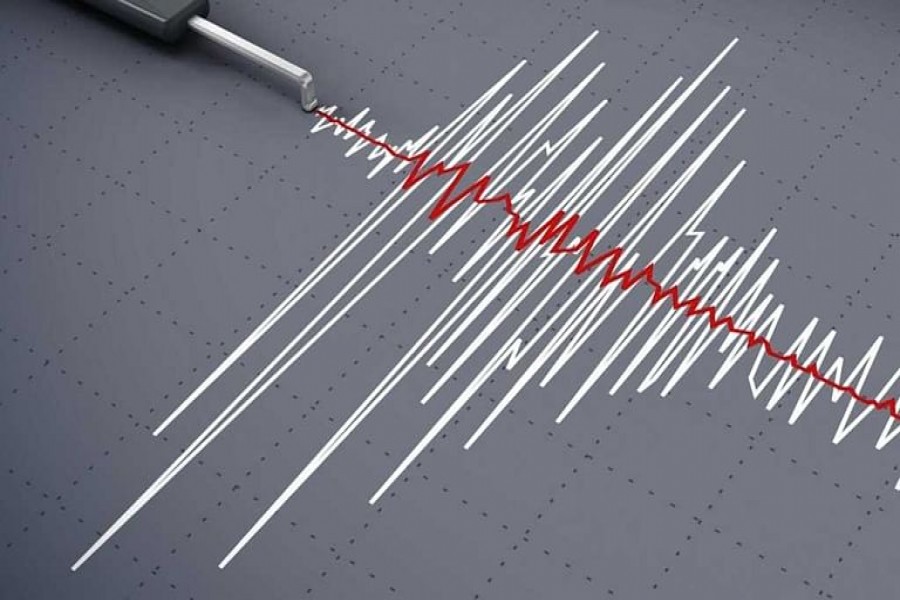The planet Earth, the only known orbiting satellite of the star Sun serving as home to life, convulses and does so at an interval ranging roughly between 100/120 and 500 years. Such convulsions take the form of volcanic eruption or collision of the Earth's ribs called tectonic plates. While volcanic eruption has its build-up detectable for weeks, months to a year, the geothermal activities of a catastrophic earthquake defy the most sensitive seismic censors science has as yet come up with. On the count of unpredictability, earthquake is the deadliest of all natural calamities.
Just imagine if there were an early warning system like that of the storm or cyclone which may move across an area far wider and lengthier than one struck by a quake, maybe, the damage and destruction to immoveable property could not be prevented. But at least lives in vast numbers would not have perished as the world is now a painful witness to the tragic deaths in south-eastern Turkey and north-western Syria with a border in between.
That the Arabian and Anatolian tectonic plates may come into clash with each other was known to geologists and seismologists because the plates here are super active. The last quake of catastrophic proportion in this region happened in 1939 when approximately 30,000 people perished. So, this time the underground fault lines there gave in before even 100 years and before it happened, people were enjoying a warm winter. But as soon as the disaster occurred in wee hours on Monday, it brought along with it freezing temperature, snowstorm and rains as if elements also conspired to deepen the tragedy beyond all limits.
This tremor is the deadliest since 1939 in this part of the world and its initial 7.8 magnitude has been followed immediately, surprisingly, by an after-shock of almost an equal magnitude recorded at 7.6 on the Richter Scale. Then there were as many as 400 aftershocks which forced the survivors to spend their night in the open. The survivors had to struggle against overwhelming physical tests as well as mental anguish because many of their near and dear ones were trapped underneath the collapsed debris. Also, they had to take whatever care of the injured they could in such an extreme hostile and chaotic condition until help came their way. In several areas of Turkey let alone Syria, though, no logistic support and other helps reached till Wednesday much to the anguish and anger of survivors.
In Syrian city Aleppo and other rebel held areas, there already existed a humanitarian crisis because of the repeated bombardments that left many buildings damaged and vulnerable and crowding of refugees there. All this led to a situation unhygienic enough for a breakout of cholera. Thus here is a crisis within a crisis. This double crisis has been further compounded by no attempt by the Syrian government or international aid agencies or any country to rush logistic support such as rescue machinery that include excavators. The worst hit areas in the Syrian part are, moreover, accessible only through a corridor from the Turkish side of the border. This exposes the excessive vulnerability of the people trapped under tons of rubble as long stretches of building blocks have become flattened.
Both Syria and Turkey were once the cradles of ancient civilisations but in this modern era, the former in particular is ill at ease to live up to the modern values and principles that forge national solidarity through a universal consensus. World's big players take advantage of this internal weakness and strife in order to extend their sphere of influences and commercial interests. Syria and a host of countries in the Middle East are made to pay for this through their noses. This is why Syria with international sanctions on it has been ignored by the major powers sending rescue teams, machinery and relief materials. Some Arab nations including Iran, Iraq, Arab Emirates have sent some emergency help to Syria, which proves paltry to the need.
As the tragedy is unfolding in its myriad forms, we in Bangladesh have certainly been moved by its enormity and, along with our empathy for the victims, forced to reflect on the possibility of enactment of a similar catastrophe here. Some experts are of the opinion that the Dauki fault line along the southern boundary of the Shillong Plateau has been in the process of geo-thermal build-up for nearly 500 years in order to go haywire at anytime now. Then Assam is the eastern most projection of the Indian tectonic plate which thrusts underneath the Eurasian plate creating a subduction zone. Thus Bangladesh sits nearly at the meeting point of three highly active tectonic plates---the Indian plate, the Eurasian plate and the Burmese plate. In a major earth quake, the country's capital may not be quite close to the epicentre but along with urban centres in the east, it still runs the risk of huge damage, destruction leading to enormous loss of lives.
Before it happens, the best option is to take the maximum preparation for averting colossal catastrophic consequences. To that end all new buildings must be constructed quake-resistant and the old, dilapidated and vulnerable ones detected for immediate demolition. Fire Service and Civil Defence volunteers trained so far seem to be the result of a good initiative but drills should be regularly held in different areas of this crowded capital and other urban centres particularly in the eastern parts of the country, which are at a greater risk. Common people will thus know about the dos and dont's when a quake strikes.


